Welcome to a new year! I am introducing my first ever Crisis Preparedness blog post. This year my posts will focus on making preparedness simple and doable. Each week I will post an article focusing on a preparedness challenge where I suggest an easy-to-do preparedness task along with tips and suggestions for getting it done. I hope they will be motivating and give you some new ideas for preparing.
Would you like to be better prepared in 2022? Join me for the 2022 Preparedness Challenge!
Week 1 Preparedness Challenge—Update Your Family’s Emergency Water Supply
HOW MUCH WATER DO YOU HAVE STORED?
You probably know that you need to store water for an emergency. Do you know that at the very minimum, you need one gallon of water per person, per day for three days? That means a family of four needs twelve gallons of water. So, take a minute and add up how much water is already in your supply.
How much water do you have stored? Do you have the minimum for three days?
If you have less than the three-day minimum amount, this is a good place to start. Ideally, your three-day supply of water should be portable so you can take it with you in case you have to evacuate. A case of 24 half-liter bottles contains a little over 3 gallons. So, a case is the perfect amount of water for one person.
Keep things simple—Store one case of bottled water per person. That way you will have enough emergency water for three days.
IS IT TIME TO INCREASE HOW MUCH WATER YOU STORE?
Relief agencies such as FEMA and the Red Cross recommend that you store one gallon of water per person, per day for fourteen days. That’s enough water for drinking, food preparation, and some hygiene needs. With that in mind, you may want to increase how much water you store.
HOW MUCH WATER DO YOU NEED FOR FOURTEEN DAYS?
Number of People x 14 = Total Number of Gallon
Total Number of Gallons / 5 = Number of 5-gallon containers
How much water is that? For a family of four, eleven 5-gallon containers or one 55-gallon container provides enough emergency water for the recommended two weeks.
IS TAP WATER SAFE TO STORE?
If you fill clean containers with regular tap water, it should be safe for storage. Although the CDC recommends changing your stored water every six months, I think most people find that excessive. If water is clean and stored in clean containers, microorganisms won’t become a problem.
However, for added safety you may want to condition the water with fresh, unscented household bleach. Add eight drops of bleach to one gallon of fresh tap water or one-half teaspoon to five-gallons. Be sure to use fresh bleach that hasn’t lots its potency.
Chlorine dioxide is another effective way to treat water. We use Aquamira Water Treatment which combines two liquids that activate the chlorine dioxide and release oxygen to kill harmful microorganisms. Chlorine dioxide comes in both liquid and tablet forms.
WHAT ARE THE BEST WATER STORAGE CONTAINERS?
Although it is not a bad idea to store some water in small, disposable water bottles, a better idea is to use more permanent containers. They are better for the environment, have a long storage life, and are more cost effective than individual bottles.
Best Practice: Store water in permanent water storage containers.
PORTABLE WATER CONTAINERS
What should you look for in a water container?— Look for containers that are portable—not only are they easier to transport, they are also easier to fill. A gallon of water weighs 8.3 pounds, so a three-gallon container weighs about 25 pounds and a five-gallon container weighs a little over forty pounds. Ideally, they should be stackable and have a handle and a spigot.
The Aqua-Tainer by Reliance and the WaterBrick are both excellent water storage containers. The Aqua-Tainer comes in four- and seven-gallon sizes. It has a comfortable handle and a spigot that stores inside the container. The standard WaterBrick container is 3.5-gallons, and the half size is 1.6 gallons. They have comfortable handles, accessible openings, and conveniently stack for compact, yet portable, storage.
LARGE STATIONARY WATER CONTAINERS
Water can also be stored in larger, stationary 55-gallon containers. Look for containers that are clean, have a spigot, and are BPH-free and FDA approved as safe for human use. Carefully consider where you will place them because they cannot be easily moved. Sanitize them before filling with a quarter cup of bleach mixed with a quart of water.
WATER STORAGE CONTAINER PUMP
You will need a siphon pump for emptying a 55-gallon water tank. The Tera Pump, 2nd Gen is a good choice. It is sturdy, has adjustable extensions, and is safe for drinking water. We keep it.
WHAT’S NEXT?
If you already have basic water storage taken care of, then consider updating your water preparedness in other ways. Is it time to increase the amount of water you store and get larger, more permanent water containers? Do you need to recycle and refresh the water you already have stored? Do you need to add water purification chemicals to your storage? Have you been wanting to get individual water filters for each family member or maybe a large group filter?
Look for help with these questions in future blog posts. Or you can also learn more about storing water, different ways to purify water, and ideas for filtering water in Crisis Preparedness Handbook, Third Edition (2020). If you don’t already have a copy, you can find it here on my website CrisisPreparedness.com. Or, get it on Amazon in the Kindle version or as a regular hard copy book.
#emergencypreparedness #waterstorage #emergencywater #crisispreparednesshandbook
You’ll see links on this site associated to various products, services, etc. Assume any link you see on this site is an affiliate link, which means if you click on it, CrisisPreparedness.com may receive compensation.)
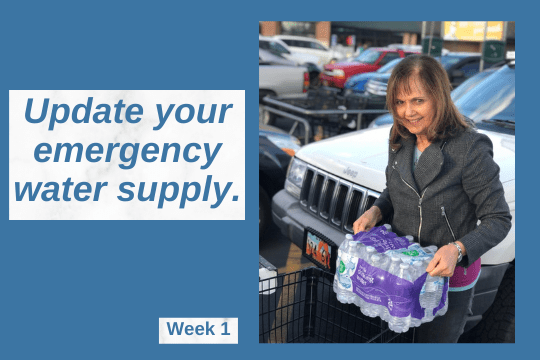
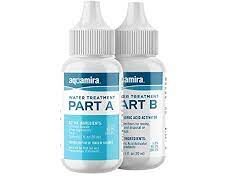
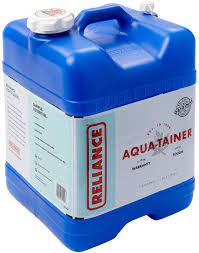
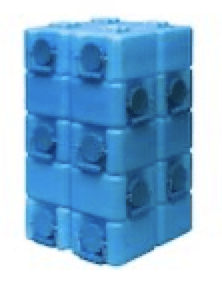
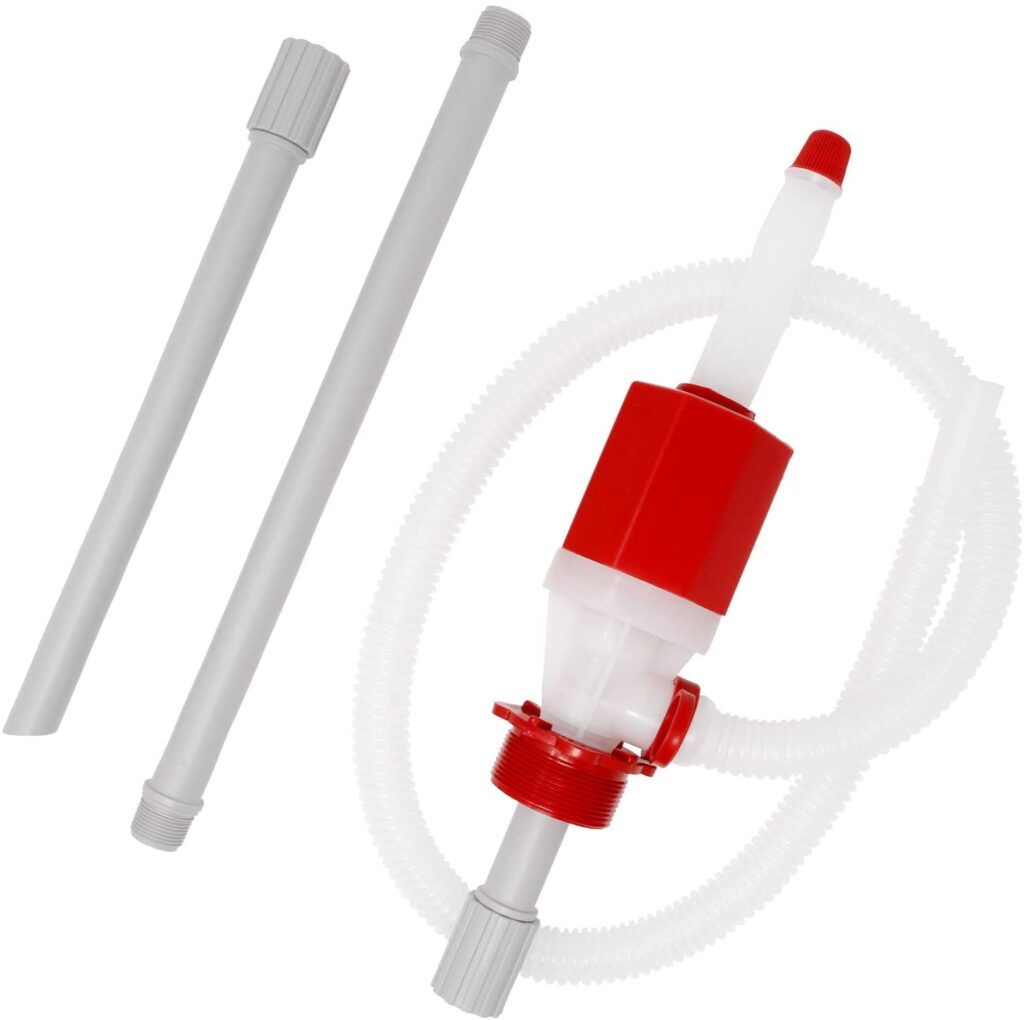
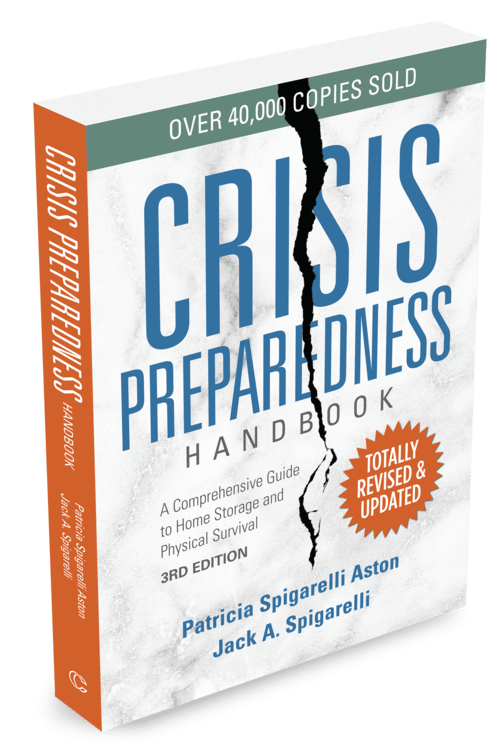


5 thoughts on “Tips for Updating Your Emergency Water Supply”
Thank you for your hard work ..and sharing what you have learned. You bless many people.
As always, you are AMAZING – so unselfish and generous of your time, sharing valuable info with others. Thank you‼️
I read the book, and there was TOO much information that I was left confused. One challenge a week I can manage! Thank you .
How do you store water over the winter if you live in a colder climate? The only place a 55 gallon drum will fit is in our unheated shed. How do we keep this from freezing and cracking the drum?
That is a great question. We have stored water outside and it can be a challenge when it freezes. If you have the water in a shed, then the containers are protected from sunlight which is a good thing, so they won’t deteriorate from UV light. As you understand, water expands when it freezes, so my solution is to leave some room in the containers for expansion. Water expands 8% to 9%, so fill you containers about 9/10 full.
I hope that helps. Thanks for the question.
Best,
Patricia